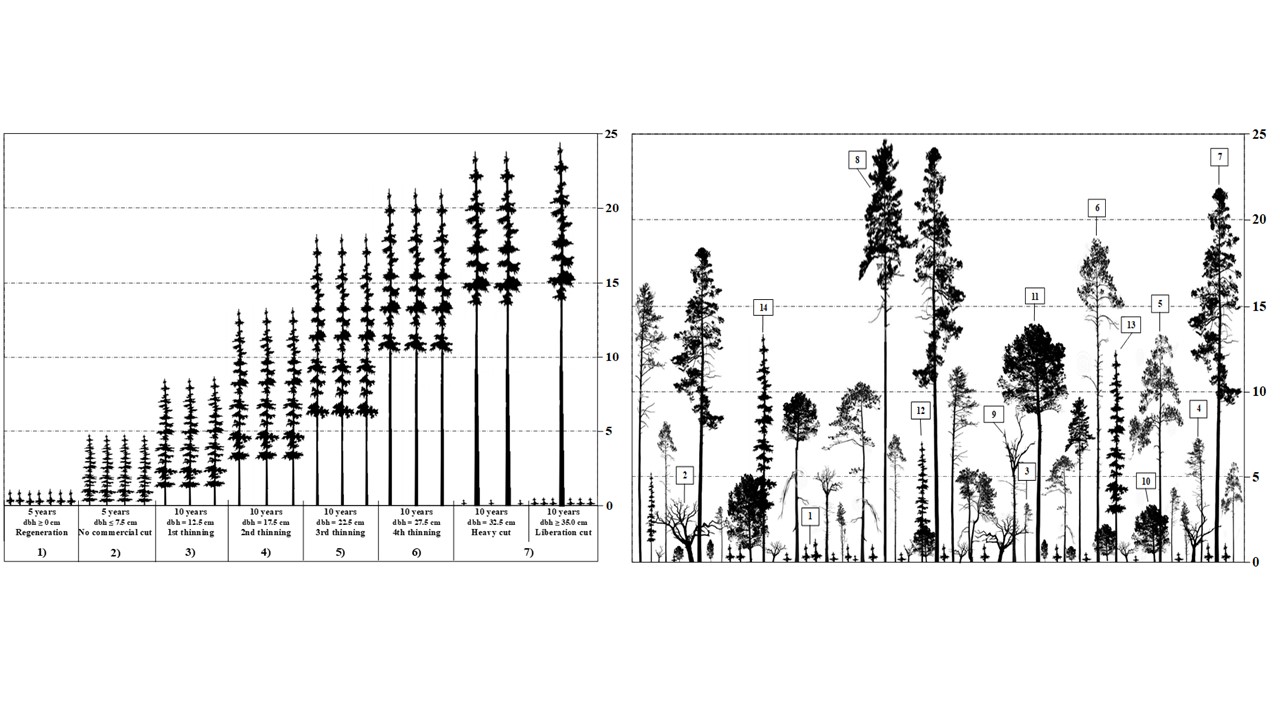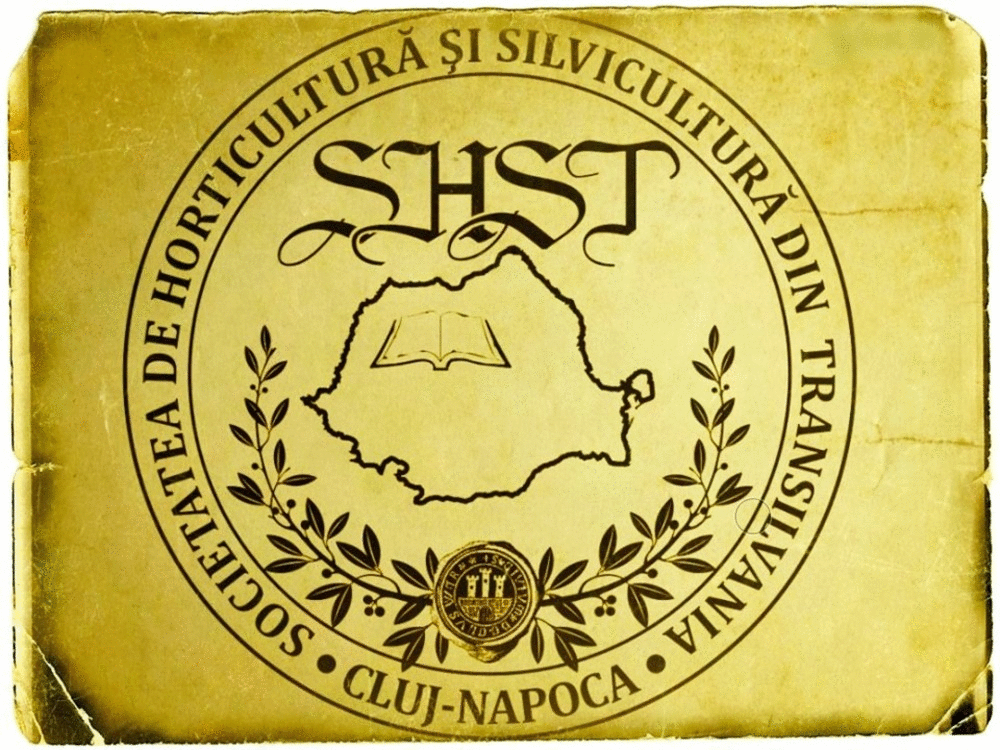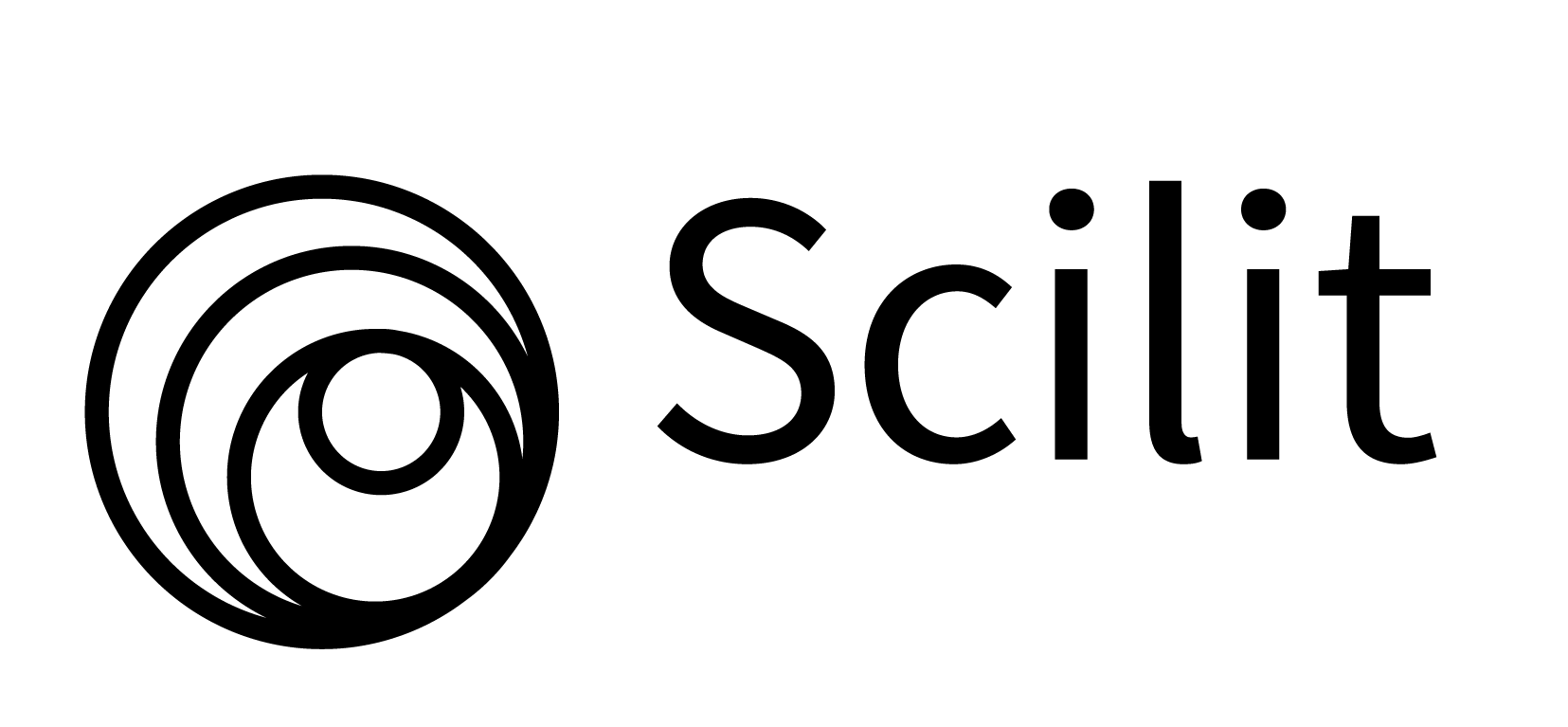Efficient use of timber resources in Mexico: Historical development and current challenges
DOI:
https://doi.org/10.55779/nsb15211508Keywords:
forest residues, intensive silviculture, selective treatments, transformation and processing, wood industry, wood productsAbstract
The use and consumption of wood has always captured the attention of forest researchers, mainly from the point of view of forest management and the sustainable processing of raw materials. For this reason, the wood industry has not only been concerned with the maintenance of forests, but also with efficient processing. The objective was to identify, analyse and discuss the main elements that influence the efficient use of natural timber resources at a global, regional and local level, providing a historical and current perspective of the industrial forestry sector in Mexico. Historically, the wood industries worldwide have been concerned with applying intensive silvicultural treatments in native and artificial forest stands, in search of satisfying the demand of a growing market. In this context, industries evolved as processes needed to be more efficient. Therefore, efforts were made to reduce and take advantage of forest residues, at the same time various historical events generated additional needs. At present, the integration of silviculture and forest transformation allow to increase and improve the quality of the products generated. Through the application of intensive silvicultural treatments, products of a single species are obtained. However, it is possible to direct production to a specific market as the forest mass develops. For its part, selective treatments in uneven-aged forests maintain a constant production of diverse products for different specialized markets. In Mexico, it is imperative to analyse and generate innovative or competitive products derived from wood to improve the efficiency of forest harvesting.
Metrics
References
Aguirre-Calderón OA (2015). Manejo forestal en el siglo XXI [Forest management in the 21st century]. Madera y Bosques 21:17-28. https://doi.org/10.21829/myb.2015.210423
Aguirre OA (1997). Hacia el manejo de ecosistemas forestales [Towards the management of forest ecosystems]. Madera y Bosques 3:3-11. https://doi.org/10.21829/myb.1997.321369
AHEC (1995). Los bosques del futuro [The forests of the future]. Madera y Bosques 1:51-55. https://doi.org/10.21829/myb.1995.121398
Anderson HW, Papadopol CS, Zsuffa L (1983). Wood energy plantations in temperate climates. Forest Ecology and Management 6:281-306. https://doi.org/10.1016/S0378-1127(83)80007-3
Ayala-Mendivil N, Sandoval G (2018). Bioenergía a partir de residuos forestales y de madera [Bioenergy from forest and wood residues]. Madera y Bosques 24:e2401877. https://doi.org/10.21829/myb.2018.2401877
Ayipio E, Wells DE, Smith M, Blanchard C (2021). Performance of Greenhouse-Grown Beit Alpha Cucumber in Pine Bark and Perlite Substrates Fertigated with Biofloc Aquaculture Effluent. Horticulturae 7(6). https://doi.org/10.3390/horticulturae7060144
Aylor W (1930). Markets for sawmill and woodworking machinery in Mexico, Guatemala, Panama and Puerto Rico. In U. S. D. o. Commerce (Ed). (Vol. Trade Information Bulletin No. 675). Washington, USA.
Aylott MJ, Casella E, Tubby I, Street NR, Smith P, Taylor G (2008). Yield and spatial supply of bioenergy poplar and willow short‐rotation coppice in the UK. New Phytologist 178:358-370.
Başkent EZ, Kašpar J (2022). Exploring the effects of management intensification on multiple ecosystem services in an ecosystem management context. Forest Ecology and Management 518:120299. https://doi.org/10.1016/j.foreco.2022.120299
Boissiere J (1991). Forges et Forêts. Recherches sur la consommation proto-industrielle de bois. Sous la direction de Denis Woronoff. 1990. Dix-Huitième Siècle 485-485.
Bond B, Lyon S, Munsell J, Barrett S, Gagnon J (2014). Perceptions of Virginia's Primary Forest Products Manufacturers regarding Forest Certification. Forest Products Journal 64:242-249. https://doi.org/10.13073/FPJ-D-14-00021
Borrego-Núñez C, Martínez-Álvarez LD, Carrillo-Parra A, Herrera-Ibarra JF, González-Ruiz MaA (2022). Reflections on Energy Sustainability in Latin America: Biomass and Circular Economy. International Journal of Arts Humanities and Social Sciences Studies 7(11):40-46. https://doi.org/10.3390/su15010169
Borgin K (1958). Development of the particle board industry in Europe. Journal of the South African Forestry Association 32:56-71. https://doi.org/10.1080/03759873.1958.9630878
Borz SA, Oghnoum M, Marcu MV, Lorincz A, Proto AR (2021). Performance of small-scale sawmilling operations: a case study on time consumption, productivity and main ergonomics for a manually driven bandsaw. Forests 12(6):810. https://doi.org/10.3390/f12060810
Bredström D, Jönsson P, Rönnqvist M (2010). Annual planning of harvesting resources in the forest industry. International Transactions in Operational Research 17:155-177. https://doi.org/10.1111/j.1475-3995.2009.00749.x
Cardenas E, Orellana LH, Konstantinidis KT, Mohn WW (2018). Effects of timber harvesting on the genetic potential for carbon and nitrogen cycling in five North American forest ecozones. Scientific Reports 8:3142. https://doi.org/10.1038/s41598-018-21197-0
Clapp RA (1995). Creating competitive advantage: forest policy as industrial policy in Chile. Economic Geography 71:273-296. https://doi.org/10.2307/144312
Coelho Junior LM, de Sousa Selvatti T, Vanderlei Alencar F, Lopes da Silva M, Pereira de Rezende JL (2019). Global concentration of MDF (Medium Density Fiberboard) exports. Revista Chapingo Serie Ciencias Forestales y del Ambiente XXV:413-424. http://dx.doi.org/10.5154/r.rchscfa.2018.11.084
Corvalán P (2020). Consideraciones silvícolas para la producción de postes en plantaciones de Pinus radiata D. Don en Chile [Silvicultural considerations for the production of poles in Pinus radiata D. Don plantations in Chile]. Revista Cubana de Ciencias Forestales 8:375-391. https://cfores.upr.edu.cu/index.php/cfores/article/view/521/pdf
Courtnage RA (1926). The Utilization of Hardwoods. The Forestry Chronicle 2:4-5. https://doi.org/10.5558/tfc2004-2
Cox F (1976). Estudio metodológico de inventarios de reconocimiento en bosques naturales [Methodological study of reconnaissance inventories in natural forests]. Bosque 1:75-86. https://doi.org/10.4206/bosque.1976.v1n2-03
Daniels JD (1984). Role of tree improvement in intensive forest management. Forest Ecology and Management 8:161-195. https://doi.org/10.1016/0378-1127(84)90052-5
Dávalos R (1996). Importancia ecológico-económica del aprovechamiento de los bosques [Ecological-economic importance of forest use]. Madera y Bosques 2:3-10. https://doi.org/10.21829/myb.1996.221382
De Molina MG, Alier JM (2001). Naturaleza transformada: estudios de historia ambiental en España (Vol. 10). Icaria Editorial. Pp 396.
Eisenbies MH, Volk TA, DeSouza D, Hallen K, Stanton B, … Zerpa J (2021). An assessment of the harvesting and fuel performance of a single-pass cut-and-chip harvester in commercial-scale short-rotation poplar crops as influenced by crop and weather conditions. Biomass and Bioenergy 149:106075. https://doi.org/10.1016/j.biombioe.2021.106075
Escárpita A (2002). Situación actual de los bosques de Chihuahua [Current situation of the forests of Chihuahua]. Madera y Bosques 8:3-17. https://doi.org/10.21829/myb.2002.811302
Estrada O, Rodríguez SG (2021). Más de 100 años de cultivo al bosque en Chihuahua. Caso Ejido El Largo y Anexos [More than 100 years of forest cultivation in Chihuahua. Case of Ejido El Largo y Anexos]. Dirección Técnica Forestal de Ejido El Largo y Anexos. Pp 143.
Fekiač J, Gáborík J, Vojtkuliak M (2021). Properties of Plywood Made from Perforated Veneers. Forests 12(12):1709. https://doi.org/10.3390/f12121709
Ffolliot PE, Gottfried GJ, Kruse WH (1999). Past, present, and potential utilization of pinyon-juniper species. In: Monsen SB, Stevens R (Eds). Proceedings: Ecology and management of pinyon-juniper communities within the Interior West. Proceedings RMRS-P-9, US Department of Agriculture, Forest Service, Rocky Mountain Research Station, Fort Collins, CO 254-259.
Fuentes M, García J, Hernández J (2006). Factores que afectan el mercado de madera aserrada de pino en México [Factors Affecting the Pine Sawn Timber Market in Mexico]. Madera y Bosques 12:17-28. https://doi.org/10.21829/myb.2006.1221240
Gadow K, Puumalainen J (2000). Scenario Planning for Sustainable Forest Management. In K. von Gadow, Pukkala T, Tomé M (Eds). Sustainable Forest Management 319-356. https://doi.org/10.1007/978-94-010-9819-9_9
Gisborne HT (1929). The industrial revolution and forestry. Journal of Forestry 27:347-351. https://doi.org/10.1093/jof/27.4.347

Downloads
Published
How to Cite
Issue
Section
License
Copyright (c) 2023 Joel RASCÓN-SOLANO, Oscar A. AGUIRRE-CALDERÓN, Wibke HIMMELSBACH, Juan A. NÁJERA-LUNA, Eduardo ALANÍS-RODRÍGUEZ, Javier JIMÉNEZ-PÉREZ, Eduardo TREVIÑO-GARZA

This work is licensed under a Creative Commons Attribution 4.0 International License.
Papers published in Notulae Scientia Biologicae are Open-Access, distributed under the terms and conditions of the Creative Commons Attribution License.
© Articles by the authors; licensee SMTCT, Cluj-Napoca, Romania. The journal allows the author(s) to hold the copyright/to retain publishing rights without restriction.
License:
Open Access Journal - the journal offers free, immediate, and unrestricted access to peer-reviewed research and scholarly work, due SMTCT supports to increase the visibility, accessibility and reputation of the researchers, regardless of geography and their budgets. Users are allowed to read, download, copy, distribute, print, search, or link to the full texts of the articles, or use them for any other lawful purpose, without asking prior permission from the publisher or the author.













.png)















